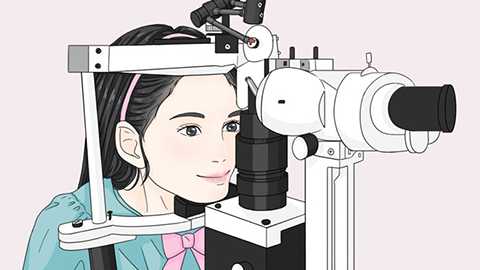How to Restore Eyesight
Generally, vision loss may be caused by prolonged eye strain, myopia, hyperopia, astigmatism, cataracts, and other conditions. It can usually be treated through lifestyle adjustments, rest, vision correction, or surgery. If vision continues to deteriorate, timely medical consultation and examination are recommended. Detailed analysis is as follows:

1. Prolonged Eye Strain: Staring at computer screens, mobile phones, or other close-up objects for extended periods can easily lead to eye muscle tension and visual fatigue, which in turn affects vision. Although not accompanied by specific symptoms, long-term strain can damage vision. It is recommended to take regular breaks, look into the distance periodically to relax the eyes, perform eye exercises, and adjust the work environment to maintain suitable brightness and contrast.
2. Myopia: Myopia is a common cause of vision loss, usually due to an overly long eyeball or excessive refraction of the lens inside the eye, causing distant objects to be out of focus on the retina. Patients with myopia often experience blurred vision when looking at distant objects, while near vision remains relatively clear. Treatment generally involves wearing concave lenses to correct vision, or using orthokeratology lenses worn at night to temporarily reduce myopia. Adult patients may also consider laser refractive surgery or implantable lenses to correct myopia.
3. Hyperopia: Hyperopia occurs when the eyeball is too short or the corneal curvature is too flat, causing light to focus behind the retina. Patients with hyperopia often experience blurred vision and eye fatigue when looking at nearby objects. Treatment involves wearing convex lenses to correct vision, or undergoing surgical correction such as lens replacement surgery.
4. Astigmatism: Astigmatism results from an irregularly shaped eyeball, causing light to fail to focus accurately on the retina, leading to blurred vision. Patients with astigmatism may experience varying degrees of clarity in different directions. Treatment requires wearing cylindrical lenses to correct vision or undergoing corneal refractive surgery for correction.
5. Cataracts: Cataracts are a condition in which the lens loses transparency or changes color, leading to blurred vision and symptoms such as gradual vision loss, glare, and reduced color perception. Treatment generally involves surgery, using ultrasound or laser techniques to remove the cloudy lens and implant an artificial intraocular lens to restore vision.
It is recommended to maintain healthy lifestyle habits and good eye hygiene in daily life, such as ensuring appropriate indoor lighting, undergoing regular eye exams, and getting sufficient sleep, to maintain eye health.










